EPM 11.1.2 - Getting Started and Installation
I have finally managed to download & install the necessary binaries for the EPM 11.1.2 Essbase installation. When i started the download, i was actually wary of downloading the 64 bit Essbase since 11.1.2 is a significant rewrite when compared with the previous 11.1.1.3 version. But i still went ahead and i have to say that the installation went through successfully in the first attempt itself. There are certain things that one need to be aware of as some people seem to get stuck at a certain point in the installation. The install binaries in OTN and E-Delivery seem to be different. So do not mix and match the binaries. In my case, i downloaded all my binaries from OTN as E-Delivery was too slow to download. Following are the components that one would have to download for installing Essbase
- EPM System Installer
- EPM Foundation Services (All the 4 parts are needed. 3 Parts are OS specific and the last part is OS generic)
- EPM Essbase Server (both the parts are needed. The first part is OS generic and 2nd part is OS specific)
- EPM Essbase Client (OS generic)
- EPM Static Content (OS generic)
When you unzip the contents there are 2 things that you need to be aware of
- The file size requirements have significantly increased in this release. So, if you are installing this on a VM, then make sure that you atleast have 30 to 40 GB of free space.
- In EPM 11.1.1.3, we can just fire the unzip commands (in linux) and overwrite the files. But in the case of 11.1.2, one has to be extremely careful while doing the unzip. Since there are some binaries that are OS generic and some binaries that are OS specific, ensure that you unzip the Essbase Server, Essbase Client and Essbase Static Content files in separate directories. And then copy the assembly files to the main assemblies directory. Any mistake here, the installer will not recognize Essbase.
The folder structure within your assemblies install folder should have the following folders
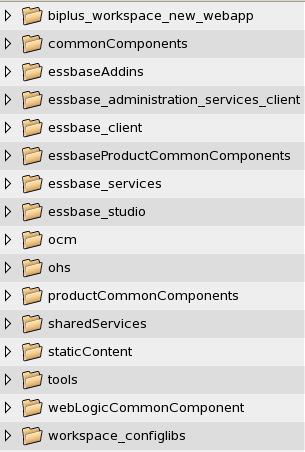
There are some significant changes to the entire EPM framework. So direct upgrades are not possible. The main changes are
- Shared Services does not use OpenLDAP anymore. Instead it uses a local database that is part of the Weblogic framework.
- Apache Web Server has been replaced by Oracle HTTP Server and the Tomcat application server has been replaced by Weblogic server.
- The base memory footprint required (RAM) has increased significantly due to the introduction of HTTP Server and Weblogic server.
- There are some ADF based components that are used widely within the workspace. You can actually see how the entire Oracle product is converging using the common ADF framework.
- The directory structure of the entire EPM 11.1.2 is completely different from the previous EPM 11.1.1.3 release. Essbase base folders have been pushed into the weblogic Middleware home directory.
- Essbase clustering can be done directly during the installation process itself. There are significant changes in the Essbase ASO functionality as well.
- Not a significant one, but the admin passwords can be changed as part of the install itself.
- Data Direct drivers are not used anymore. EPM 11.1.2 now supports OCI by default.
The screenshot below shows the weblogic domain that gets created during the installation. This is the base of the entire EPM release now (Default install, other application servers are still supported)

As part of Essbase integration with Oracle SSO and Oracle Enterprise Manager, Oracle HTTP server is mandatory and should be installed prior to Essbase installation.
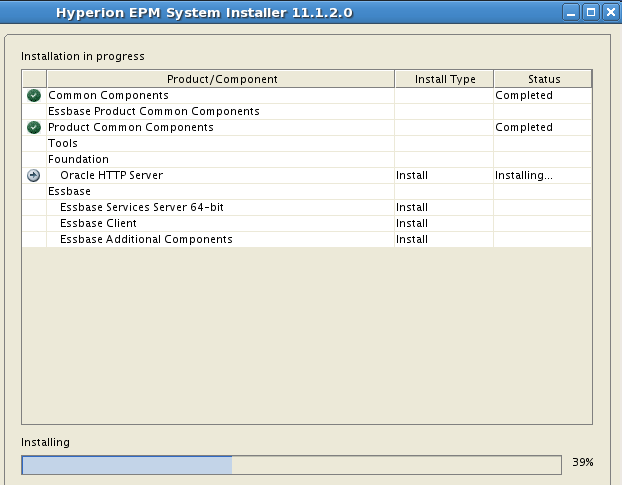
As i said above, Essbase by default is installed within the Middleware folder structure. This can be customized. Also, you can see the cluster setup can be done as part of the install process (i will cover this in a later blog entry)
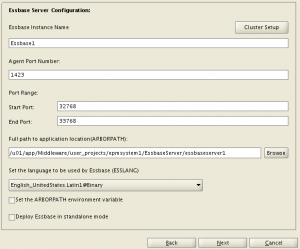
And finally, workspace will be deployed & rendered through the Oracle HTTP server. All the other applications like APS, Planning, EPMA will be accessibly within the workspace through the Oracle HTTP server instead of apache.
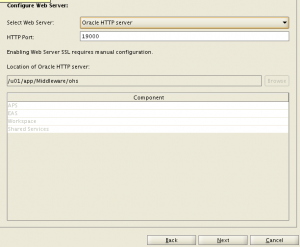
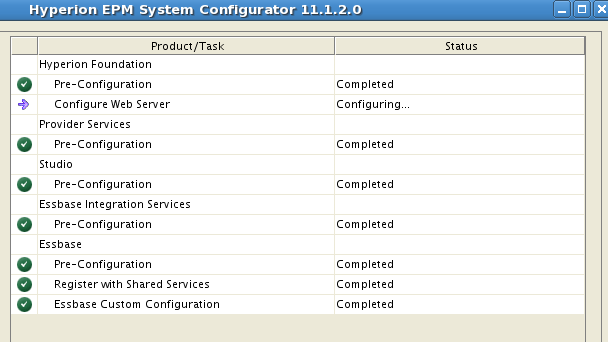
You can notice that the entire shared services & workspace UI now have more of a ADF feel to it.
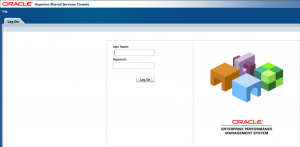
From an Essbase Administration services standpoint, the Java Web Start based console has undergone a small UI change. And of course, the features that have been added in EAS directly correspond to the features added in Essbase. I will cover them in the coming blog entries.
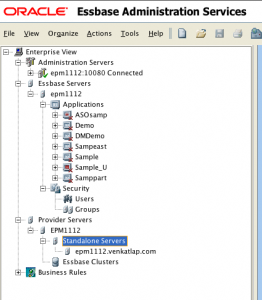
From my standpoint, the amount of changes in this release are so significant that this does not seem to be a .X release. I am just wondering how the EPM team managed to bring in so many changes within a short period of time (after the EPM 11.1.1.3 release) considering the fact that we have been waiting for BI EE 11g for almost a couple of years now. I am guessing this has been in the works for quite a while and i will have to say that the EPM team has done an extraordinary job in bringing this together. Atleast these are my first impressions. I will blog about some of the new features over the course of next week.